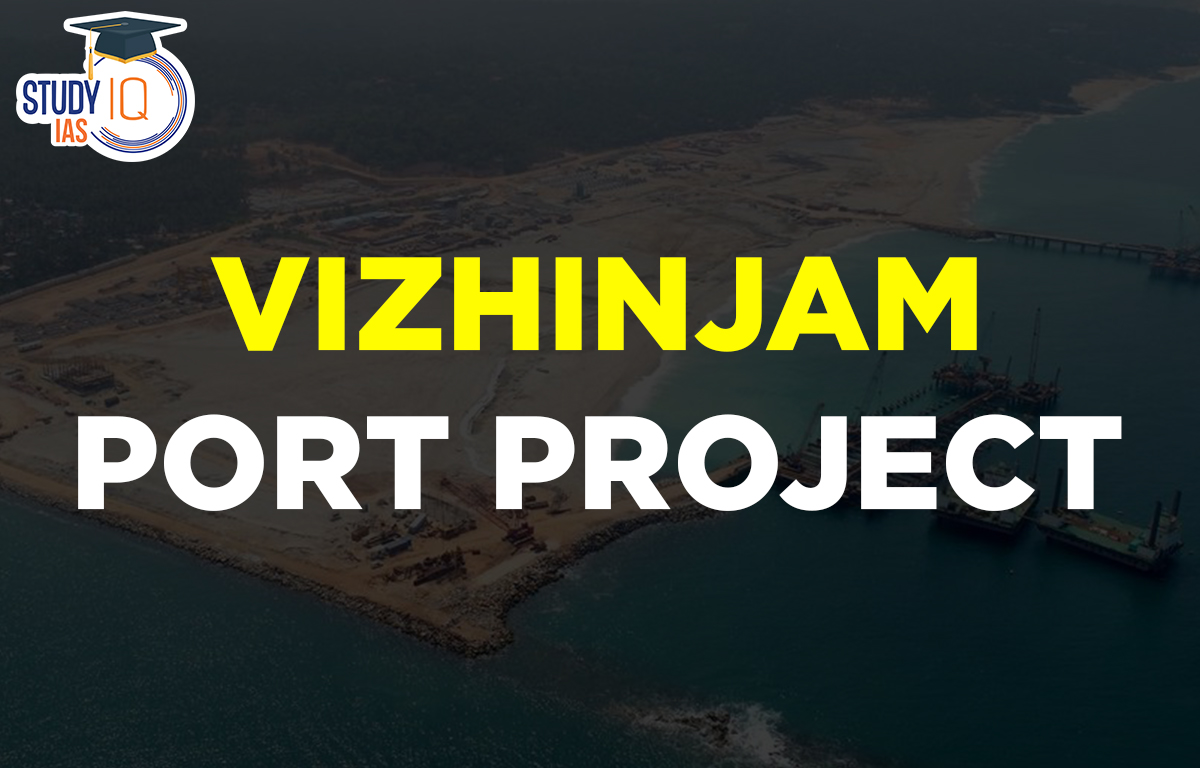Table of Contents
What is the Vizhinjam Port Project?
Vizhinjam Port Project: The Vizhinjam International Transhipment Deepwater Multipurpose Seaport is an ambitious project taken up by Government of Kerala.
- It was announced as a fast-track project in 2009 though actual work began much later.
- Location: Vizhinjam near Thiruvananthapuram, Kerala.
- Project Details:
- It is a Rs 7,525 crore port, being built under a Public Private Partnership (PPP) model with Adani Ports Private Limited.
- The port is to have 30 berths, and will be able to handle giant “megamax” container ships.
- It is proposed to follow the landlord port model, with the intention of catering for passenger, container and other cargo shipping.
- Significance of the Project:
- Locational advantages: Due to the following locational advantages, Vizhinjam Port Project is likely to play a pivotal role in the maritime development of the country and Kerala.
- Located on the southern tip of the Indian Peninsula, just 10 nautical miles from the major international sea route and east-west shipping axis.
- Natural water depth of more than 20m within a nautical mile from the coast with a requirement of minimal dredging.
- Growth pole effect: The port is expected to leverage the growth of minor ports in Kerala and other regional ports, creating thousands of employment opportunities.
- Strategic significance: With its proximity to international sea route, the project has acquired great strategic significance, given the growing influence of Chinese and Pakistan interests in the neighbourhood.
- Historical significance: The Vizhinjam port has been a historically significant hub of trade since the Roman times.
- Locational advantages: Due to the following locational advantages, Vizhinjam Port Project is likely to play a pivotal role in the maritime development of the country and Kerala.
Read About: Calling Name Presentation (CNAP)
Why are Fishermen Protesting?
- Coastal erosion: According to protesters, the port work has aggravated the coastal erosion along the coast of Thiruvananthapuram, taking away their livelihood and dwellings.
- Demands of protesters:
- They want a scientific study to assess the impact of the port work on the shoreline and the project to remain suspended until the study report comes out.
- Rehabilitation of families who lost their homes to sea erosion
- Effective steps to mitigate coastal erosion
- Financial assistance to fisherfolk on days weather warnings are issued
- Compensation to families of those who lose their lives in fishing accidents
- Subsidized kerosene (It has been demanded by claiming that because of the project, fishermen have to venture deeper into the ocean for catch, increasing the fuel cost burden.)
- A mechanism to dredge the Muthalappozhi fishing harbour in Anchuthengu in Thiruvananthapuram district.
Has the Project Aggravated Coastal Erosion?
- Erosion along Kerala’s coast: Naturally, coastal erosion is dominant in all coastal districts of Kerala. It is because, the seasonal shoreline changes would be more severe during monsoon months due to the high-energy short storm waves that lash the coast almost in a perpendicular position.
- Though erosion is dominant in all districts, it is more severe along the coastline of Thiruvananthapuram.
- Report by an expert committee: The latest report of the expert committee appointed by the National Green Tribunal and Shoreline Monitoring Cell observed that erosion around Thiruvananthapuram remained the same as before and after the commencement of the port construction (December 2015).
- However, during the October 2020–September 2021 period, spots like Kochuveli and Cheriyathura to the north of Valiyathura suffered erosion.
- The report noted that the relatively high number of cyclones formed over the Arabian Sea after cyclone Ockhi in 2017 was the main reason for the recent erosion and accretion and that the impact of the port activity on either side of the coast had less significance.
The Kerala Government’s Stance
- The Kerala Government made it clear that since the coastal erosion is due to climate change as reported by various agencies, the demand for stopping the port construction cannot be conceded.
- Officials argue that the Vizhinjam seaport is being constructed inside a natural sediment cell which is a pocket-like area in which interruptions to the movement of sand along the coast do not significantly affect the adjacent coastline.


 UNESCO World Heritage Sites of India Lis...
UNESCO World Heritage Sites of India Lis...
 Consolidated Fund of India, Meaning and ...
Consolidated Fund of India, Meaning and ...
 Districts of MP List, Name, Importance, ...
Districts of MP List, Name, Importance, ...





















